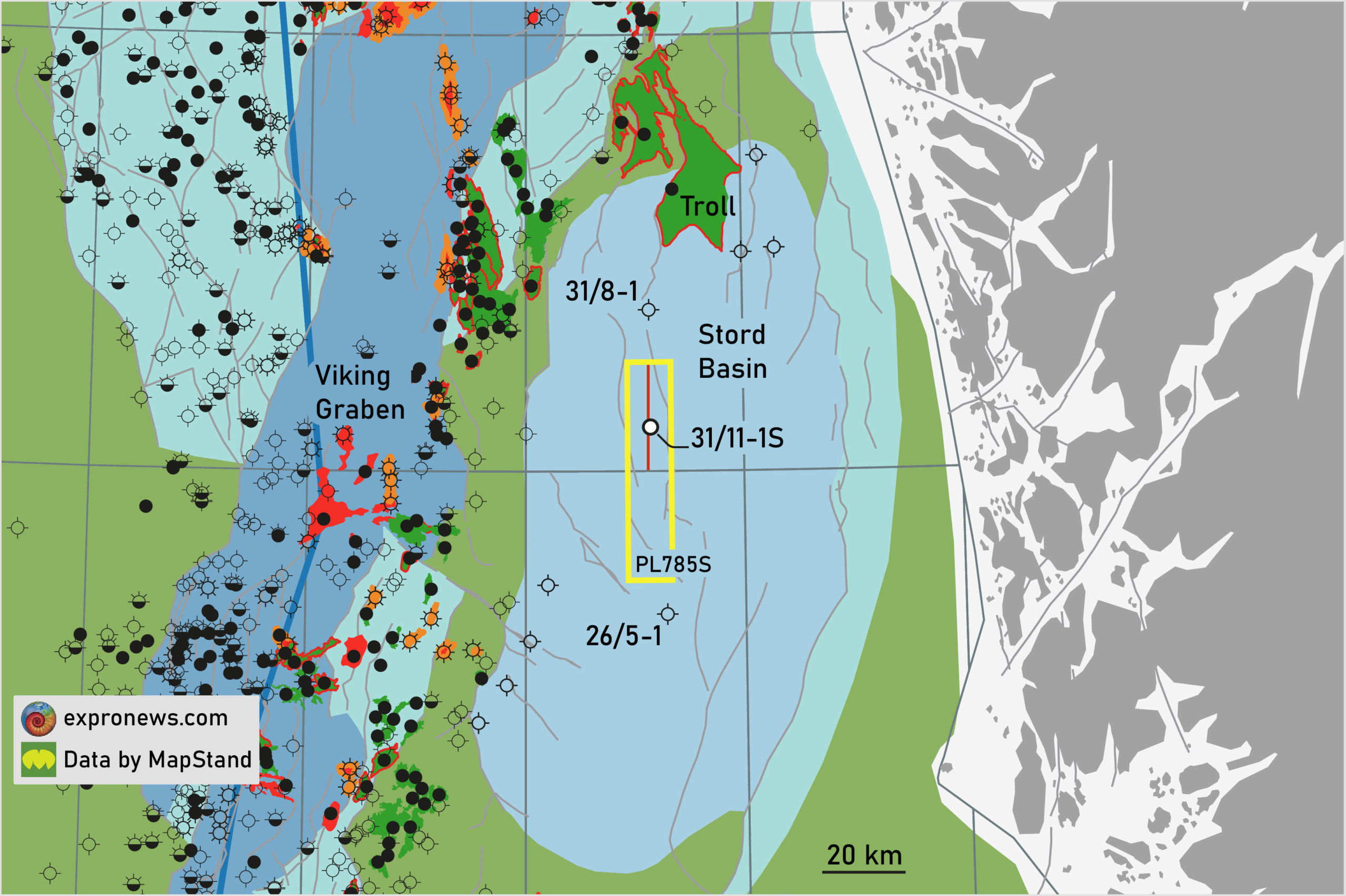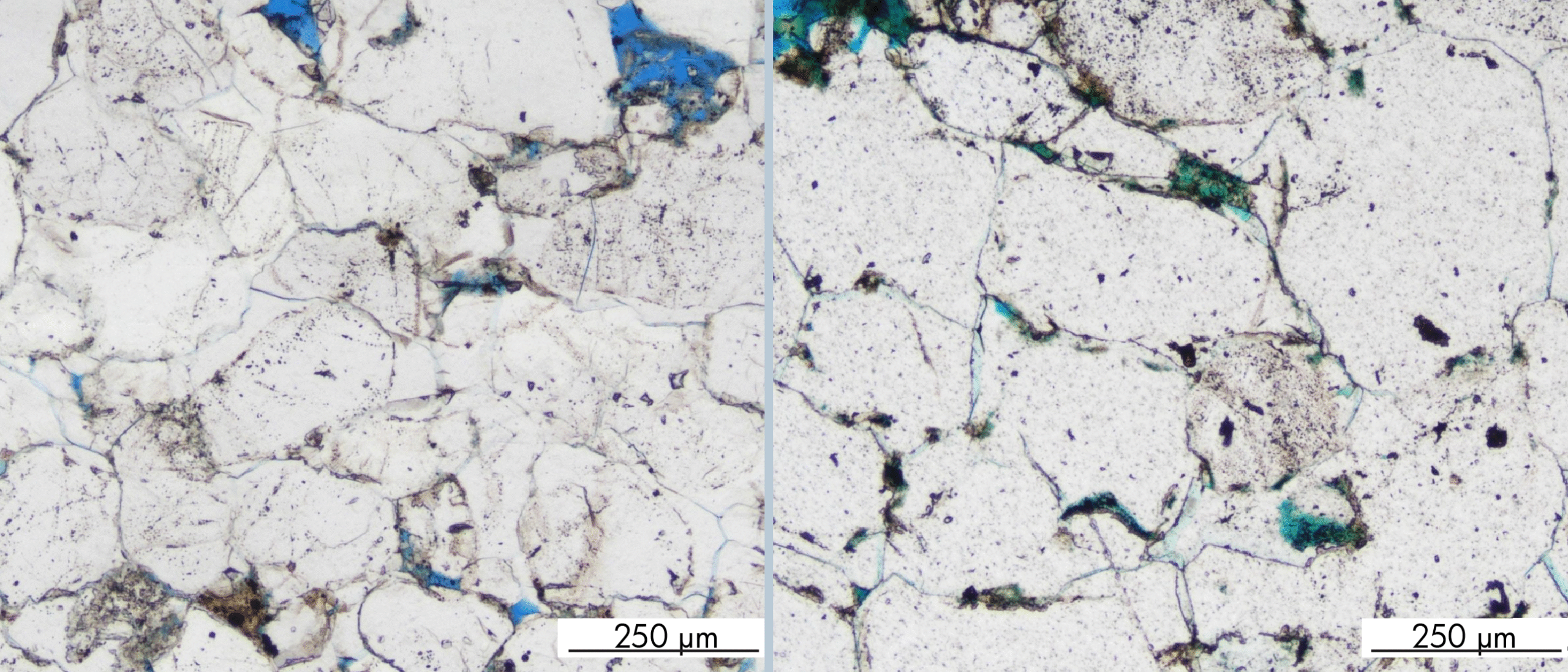Thirty years ago, a geologist from Statoil (now Equinor) concluded that Upper Jurassic source rocks in the Stord Basin may not have generated oil due to shallow burial. That is probably the main reason why hardly any wells have so far been drilled in the area, even though one of the biggest fields on the Norwegian Continental Shelf (Troll) straddles the northern margin.
Yet, the presence of a big field did not change the way people perceived the Stord Basin’s hydrocarbon potential, as the oil and gas in Troll is thought to be sourced from the Viking Graben in the west. With Equinor and partner Total (50%) now having spudded well 31/11-1S (Stovegolvet, PL 785S) in the centre of the basin, targeting Jurassic reservoirs, the basin is at a key point of its exploration history.
An Eocene test
The only well that also tested the centre of the Stord Basin was drilled in 2013 by Rocksource Exploration; 26/5-1. However, this well “only” targeted Eocene sands of the Balder Formation, before it terminated in Upper Cretaceous Chalk.
About 30 km to the north of 31/11-1S, E.On Ruhrgas drilled well 31/8-1 in 2011, testing the Breiflabb prospect in Upper Jurassic Sognefjord Fm sandstones. None of the penetrated Upper and Middle Jurassic strata had any oil shows. However, with 31/11-1S being located close to the northern margin of the Stord Basin, well 31/11-1S can still be regarded as a pioneer hole for the Mesozoic succession in the centre of the basin.
Let’s have a closer look at the subsurface setting, focusing on the reported target of well 31/11-1S: Jurassic sandstones.
A quiet place
Never having been part of the Jurassic rift system, the Stord Basin did experience its last extensional phase during the Triassic when the axis of North Sea extensional movements was situated to the east of the subsequent Jurassic graben complex.
Since the Triassic, the basin has subsided gradually, but has never been exposed to the pulse of increased burial rates the Viking Graben experienced in Cretaceous to Cenozoic times. For that reason, the Upper Jurassic source rocks that are thought to be present have not really made it into the oil window to the extent as time-equivalent strata to the west did.
That generates two possibilities in terms of how the well may have been de-risked. One, a deeper source rock was identified, or (two) better mapping/basin modelling has shed new and more positive light on the basin’s hydrocarbon generating potential.
Not the deepest part of the basin
A publication from Hamed Fazlikhani and co-workers in Basin Research last year sheds some light on the thickness distribution of the Triassic rift succession as well as the overlying post-rift interval. Their figure 2 shows a map of the base of the Triassic rift succession. When projecting the currently drilling well onto it, it is clear that although it is being drilled in an area where the rift succession is relatively thick, it is not the absolute depocentre of the basin. So, if a deeper source rock would have been the main aspect of the well to test, the current location does not seem to be best candidate.
Yet, Migris, the company that specialises in modelling hydrocarbon generation and migration, reckons that the probability of oil migration to have taken place at the well location is 61%. This suggests that there is a fair chance that at least some hydrocarbon generation took place in the area.

Stratigraphic traps
Another interesting piece of work on the Stord Basin was done by Carina Høie Østebø as part of her thesis at the NTNU in Trondheim. She included a N-S seismic line in her thesis from the block where the well is being drilled, showing well-developed southward prograding clinoforms of Middle to Upper Jurassic age (see above).
Given that closures in the not so heavily faulted Jurassic succession of the Stord Basin are harder to find than in the Viking Graben, it may be a possibility that the well is testing stratigraphic traps in this clinoform succession.
In conclusion, 31/11-1S is a very interesting test of the Stord Basin’s hydrocarbon potential, where both charge and trapping are thought to be key risks. When oil is proven, this well will certainly be a game changer for this underexplored part of the North Sea.
HENK KOMBRINK





